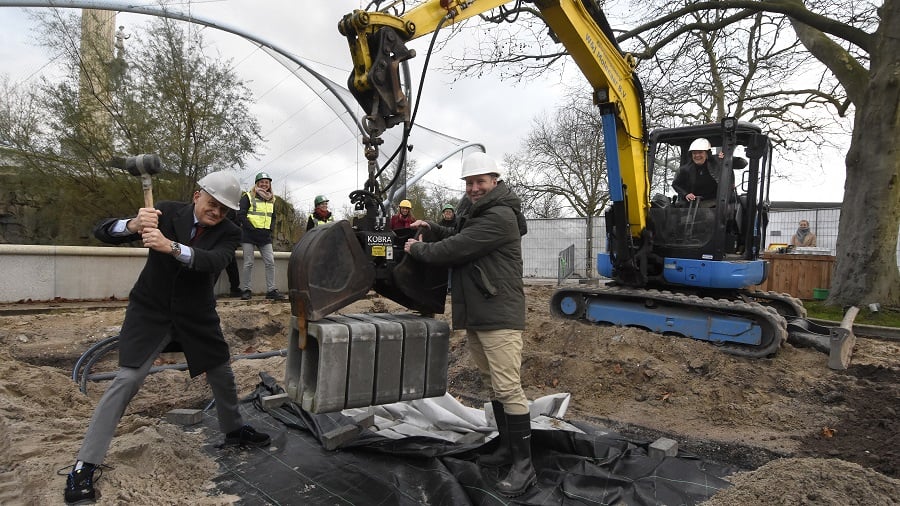
The square in front of the entrance to the zoo needed a facelift. The ground had sagged and needed to be elevated and re-paved again. This led to an idea to construct a system for the reuse of rainwater along with the restoration. Hillblock, inventor and developer of the Bufferblock, together with Field Factors, supplier of water purification systems, drew up a plan for the zoo’s square.
VPdelta
The zoo is a testbed for the VPdelta innovation program led by the Delft University of Technology (TU Delft). VPdelta promotes and accelerates innovation in the Dutch water and delta technology sector. Rotterdam Zoo – locally known as Diergaarde Blijdorp – uses a lot of water to care for their animals and the zoo itself. Blijdorp Zoo is building the system together with VPDelta in order to make it more sustainable.
How it works
Rainwater will be collected on the front square and then stored in the Bufferblocks. Inside the Bufferblocks are hollow spaces that can be filled with this water.
The Buebloqs will subsequently purify the water. This system purifies rainwater through a combination of filtration, biodegradation, and plant uptake. Using the purification method, metals, nutrients, pathogens, and organic substances are removed from the water.
Use of rainwater
The purified water can be used to irrigate plants and clean the zoo’s animal enclosures. Blijdorp Zoo expects to save about 9,000,000 liters of tap water per year. Another additional advantage is that the system prevents the sewers from overflowing.
The future
The work has not yet been completed, the contractor will start work on the construction of the purification system in January. It is expected that the system can be put into operation in the spring of 2021.The zoo project is being supported by the Schieland and Krimpenerwaard Water Board, the Municipality of Rotterdam, Delft University of Technology and Rotterdam University of Applied Sciences. Plans are still in the pipeline to reach people through Blijdorp who are not yet involved with nature and water conservation. For example, there are plans to give the square an educational purpose. Visitors to the zoo will learn more about sustainability this way.
Innovation Origins has already reported on Field Factors and their Bluebloqs system in a previous article.
Also interesting:
Sponsh returns to TU Eindhoven for its initiative to extract water from the air
Eindhoven’s surplus groundwater deserves an innovative solution

